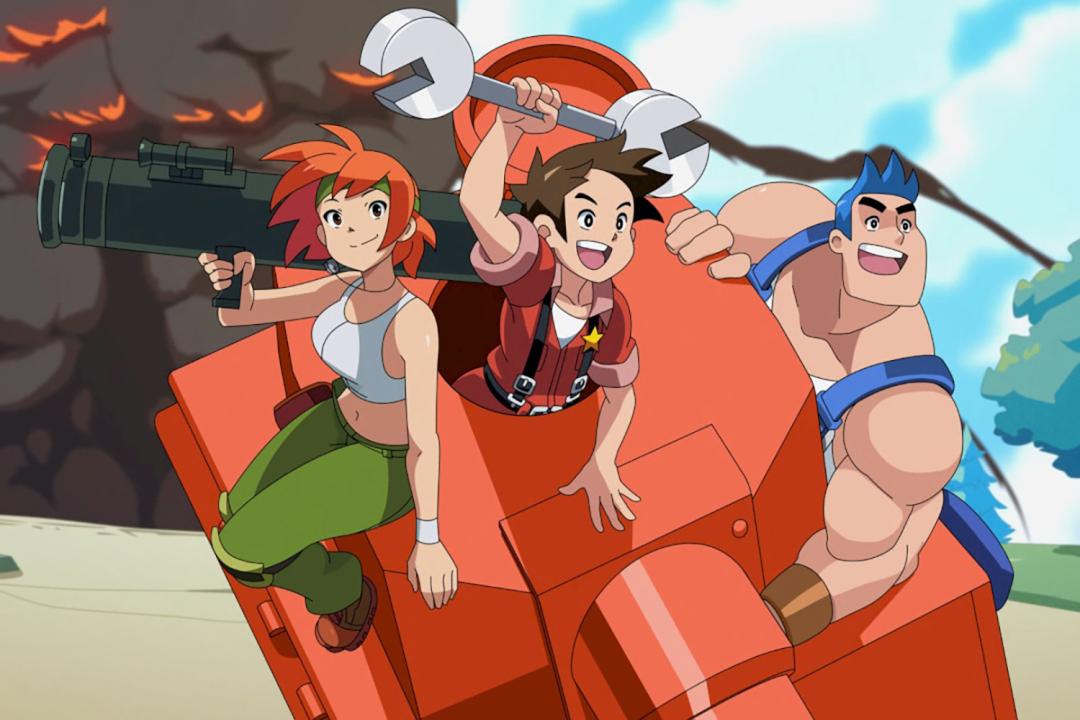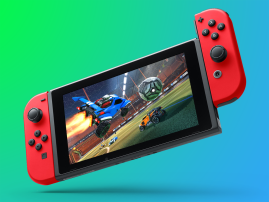Advance Wars 1+2: Re-Boot Camp review – war never changes
Two turn-based GBA strategy classics return in one package

We’d understand if Nintendo Switch owners are getting brain fatigue from all the strategy games released these past few months, but given Advance Wars is the granddaddy of them all, we’re happy to make an exception for Re-Boot Camp.
Before Fire Emblem became Nintendo’s tactics darling, developer Intelligent Systems was dominating the Game Boy Advance with its turn-based, kid-friendly alternative to Command & Conquer. Anime commanding officers (COs) each brought their own personality quirks while you built up an army, then ‘solved’ each mission like a violent puzzle.
Re-Boot Camp essentially bundles the GBA original and its sequel, Black Hole Rising, into one package, with new visuals handled by WayForward – a developer known for its toon styles and Shantae platforming series. More importantly, the tactical gameplay that felt as perfect as Chess returns intact. Does that make picking up this tactical package a no-brainer?
Marching orders


Battles in Re-Boot Camp are fought on top-down grids with land, sea, and air units, which each have their own strengths and weaknesses. Naturally tanks can obliterate infantry, but foot soldiers are the only units that can capture cities and bases needed to generate money and deploy more units. Tanks are vulnerable to air units, or any land or sea-based unit with long-range capabilities, while these in turn are sitting ducks once a unit is right next to them. These skirmishes play out with each side moving their units in a single turn (measured here as a day) as you try to bait the enemy – or rush in to gain ground control.
Different terrain increases your units’ defences, while Fog of War obscures unexplored portions of maps until you deploy a recon unit or get a soldier to higher ground. The flip side is the enemy also can’t see you, making it a great opportunity to hide your units in nearby forests for an ambush. Unless you unwittingly find one of their units hiding there already.
There’s a huge difference in how the turn-based gameplay works here compared to Fire Emblem. Each unit represents a squadron, so their points tally stands for both health and firepower. An artillery unit down to a single point will barely make a dent in an enemy tank, whereas a hero on their last legs can still land a killing blow in other tactics games.
Unlike Fire Emblem, you won’t feel the heartbreak of losing a unit for good, as most missions have bases for deploying other units in its place. This is war after all, and there will be plenty of casualties even if you emerge victorious. Sometimes you are just sending units in as a sacrificial diversion to hold back an advancing tide.
This also means you don’t have to worry about grinding missions to level up any units. Instead, the incentive for replaying is more about trying to get a better rank as you’re judged on speed, power, and technique. Points earned can then be spent in a shop to unlock more content.
Commanding attention


Your troops are somewhat disposable, so all the personality comes from your COs. At the start of the campaign you have three: all-rounder Andy, tank specialist Max and the speedy Sami. Who you play as is usually decided by the mission, though there are moments where you can choose. You units get certain bonuses and disadvantages with each, and once you’ve charged a special meter you can unleash a unique ability that turn.
As a mechanic, Andy can repair all his units by 2 points each. Max’s non-infantry units gain more power, and Sami’s infantry can cover even more ground. The flip side is having to contend with rival COs who also have tricks up their sleeve, such as Olaf who slows down your troops with a snow storm. Eagle is perhaps the most devastating, letting his non-infantry units act again in the same turn.
A separate mode called War Room lets you ignore the story and play tons of maps with any CO, including rivals (once you unlock them). With a huge roster of personalities across both games, that’s a lot of variety for different battles to play out.
COs have been given a bit more character in this reboot, with voice acted lines and brief animated cutscenes. These additions are welcome, even if we have a fondness for the original, arguably more expressive, pixel art portraits. Battlefield presentation is largely the same as the original in terms of colour and interface, albeit now in high-def and widescreen, but we’re a little less enamoured with the 3D models of the units themselves. They still get the same information across during each fight animation, which keeps the comic-style splitscreen format, but look more generic next to the handdrawn art.
Double time


While Re-Boot Camp is technically two games in one, and everything from the originals is still there – from mission layout to the occasional split paths you can take – you can’t jump straight into Black Hole Rising until you’ve completed Advance Wars. Once you’ve unlock the second campaign, you’re also free to switch between each game’s slightly different rulesets in the other game modes. We’d argue the first game is superior anyway, even if the sequel provides more objective variety and introduces more COs.
Fire Emblem fans should be aware of some differences. There’s less information available for knowing where your enemy can move and who’s in their attack range, as you can only examine individual units’ movements one by one. While there’s a concession of letting you undo mistakes, this is also not as granular as recent Fire Emblem games, as you can only reset the current day (and with that all the decisions made on the turn) with no opportunity to go back to previous days.
This is also strictly a strategy game, with none of the other series’ role-playing or social elements involved, so you will just be playing battle after battle after battle. And some of these can drag on, especially due to both sides being able to deploy more units. You may find some missions where you’re at a stalemate, slowly inching towards victory, or staring down an inevitable loss unless you choose to yield and start over.
Strategy purists, however, will be delighted. There really are a ton of maps to unlock to keep challenging yourself, plus the option to design and share your own custom ones. Online and local multiplayer are both on board, and it’s especially great that up to four players can be fighting on one map in your living room while just passing around a single Joy-Con.
Advance Wars 1+2: Re-Boot Camp verdict


Re-Boot Camp’s timing is a bit of an odd one. Yes, its release was postponed a full year because of the ongoing Russian invasion of Ukraine (even if cartoon armies from the Orange Star and Blue Moon nations couldn’t feel more distant from the realities of war), but you might’ve had your fill of tactics games by now. GBA games landing on Nintendo Switch Online’s Expansion Pack earlier this year also made us wish we could just play the originals there instead.
Nonetheless, this is a handsome collection of turn-based strategy classics. While opinions on some of its art choices might vary, there’s enough tweaks and additions that make this worthwhile. We’ve come to expect more gameplay elements from our tactics games these days, so while there might not be as much to win your heart, your mind will be greatly rewarded.
Stuff Says…
Two strategy classics with timeless gameplay return intact with this robust, modernised package
Good Stuff
Excellent balance of strategy
Great variety of COs and missions objectives
Tons of extra content
Bad Stuff
Art in the original games are better
Some battle chokepoints can drag
Not much narrative or character depth



